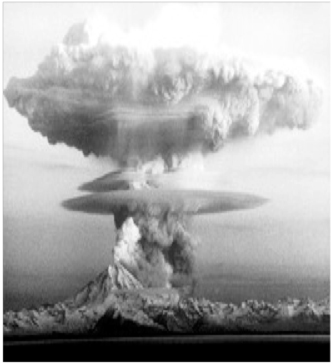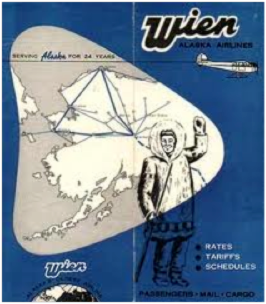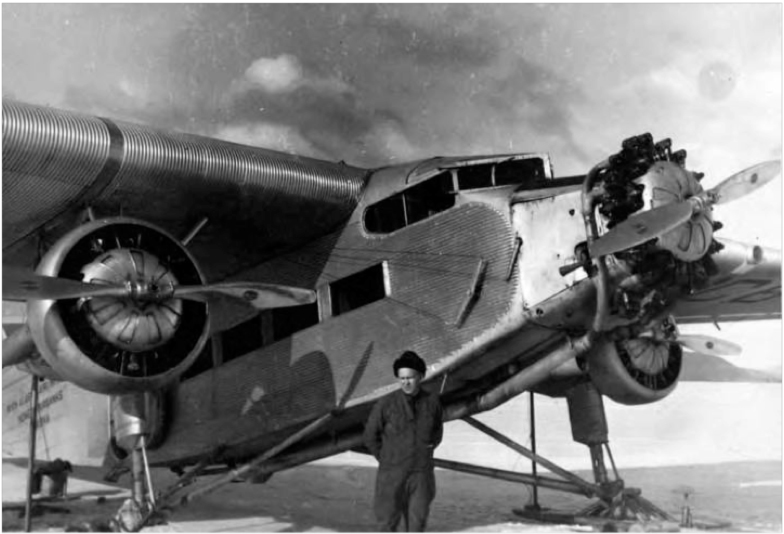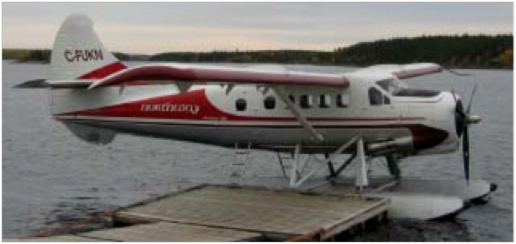Aviation Beyond Airlines
Too Hot to Handle: McDonnell XP-67 Moonbat
February 28, 2014Aviation Wisdom From The Past
March 9, 2014“Robert Novell’s Third Dimension Blog”
Good Morning and Happy Friday. Now, I realize that parts of the U.S. are getting hit hard by winter but let’s think spring, warmer temperatures, and aviation opportunities. There are aviation possibilities beyond the airlines, and while one of the two articles that I will present today are about airlines their purpose is to get everyone to think, and perhaps act, on areas that could have potential beyond the right seat of an RJ.
What about float planes, banner towing as a owner/pilot, bush flying in Alaska for fun, and profit, and last but least – how about flying with the Department of the Interior on a part-time basis in the summer flying right seat in an aerial tanker fighting fires in Alaska?
Something to think about and yes you are right when you say that none of these would be an easy task; however, if life was easy everyone would be a winner and there are lots of losers out there. However, if you are taking the time to read this I suspect that you know how to win.
The two articles below, which I published back in 2012/2013, should provide a little insight/history about our subject today. Enjoy……………………….
Noel Wien and the Alaskan Frontier
(Noel Wien standing in front of his Ford Tri-Motor. The photo is from the “Wien Family Papers Collection,” and the caption under the photo reads—“Noel-1939.”)
Noel Wien first came to Alaska in 1924 and immediately saw opportunity. He spent the first few weeks barnstorming, and then set his sights on connecting the 600,000 square miles of Alaska with a viable air transportation system. Most people find it illogical to use bush flying and viable air transportation in the same sentence but if you know your history, and read Robert Novell’s “Third Dimension Blog,” then you know that the “Air Mail Service Pilots” were the bush pilots of the lower forty-eight states and it was this group of Aviators that paved the way for commercial carriers like United, American, Eastern, and others.
So, now that we understand the importance of bush pilots let’s talk about Noel Wien’s accomplishments.
Noel Wien was known as the “Father of Alaska Bush Flying,” The Arctic Ace,” and the “Lindy of the North.” What was it that this man brought to Alaska that brought him such accolades? The same that Charles Lindbergh, Amelia Earhart, Wiley Post, and others brought to the table—-courage, skill, and the willingness to put their talent, and lives, on the line to prove that aviation was the way to the future. Well, the future is here and Aviation has connected the world, and its people, in a way that was never imagined by the early Aviators.
Noel Wien was the first person to fly from Fairbanks to Nome, the first to fly beyond the Arctic Circle, the first to fly across the Bering Strait, the first to fly from Fairbanks to Seattle, and last, but not least, the first to fly round trip between Alaska and Asia. Some might say that Noel Wien’s accomplishments were not that spectacular but for those who would say that I suspect they are slaves to GPS and a Flight Management System coupled to the autopilot.
It is hard for me to imagine flying around Alaska, and the Arctic North, using time and distance based on a ground speed that was calculated on an unknown wind aloft and flying a heading based on a crude topographical map that was normally nothing more than a hand drawn sketch. Skill was important but I think luck was an essential part of the equation; however, I am certain that most of us don’t want to be confronted with the challenges that Noel Wien, and other earlier Aviators, faced so from all of us who have benefited from your talent—- thank you sir for paving the way. I suspect that your induction in to the “National Aviation Hall of Fame” shows that your contributions to aviation are unquestionable and your place as an aviation pioneer is secure alongside Lindy, Amelia, Wiley and others.
Now, who better to give us the facts on Noel Wien, and his airline, than Noel Wien so I have four videos below that will give you a firsthand account of Mr. Wien’s accomplishments. This four part series was produced by the University of Alaska at Fairbanks and will take about thirty minutes of your time.
Alaska, Bush Pilots, and Volcanic Ash
Good Morning—I want to begin the story on Alaska, Bush Pilots, Volcanic ash, and Alaska Airlines but the first thing I would like to do is recommend a book to everyone. The book, written by James Michener, is titled “ALASKA.” I have read most of what he has written and recommend his writing to everyone. His books work well on a long lay-over because he will normally write five to seven hundred pages on the subject as he blends together all elements of his story through multiple plots. Michener’s work is considered fiction; however, he documents historical events very accurately while developing a story line around his fictional characters. Now that I have plugged one of my favorite authors let’s move ahead with a few facts about the bush planes of Alaska as well as a little history, and commentary.
Pictured above is the DHC-3 by De Havilland and is considered by most to be one of the best bush planes ever made. The Otter first flew in 1951 and was a larger version of De Havilland’s DHC-2 Beaver. I have never flown the DHC-2/3 but I have flown the Twin Otter which is known as the DHC-6. Great airplane with a lot of capability and well balanced on the controls. I once considered going to fly a Twin Otter in the Maldives but the family budget would not allow me to put my career on hold. But for those of you who have some flexibility in their life, and budget that is flexible, check out his link “Twin Otter on Floats”. This will give you a good feel for the Otter on floats as well as this link, “Pilots Blog”, will give you and overview of life as a pilot in the Maldives.
Now, let’s talk a little about the history of Alaska and why I think Russia started the Cold War. The United States acquired Alaska in 1867, from Russia, for seven point two million dollars or around two cents an acre—I don’t think the Russians have forgiven us for this and this is why I said it was the foundation of the Cold War—the 1917 revolution was how the Russian people showed their displeasure over losing Alaska, as well as a few other things, and then Stalin took advantage of the opportunity to further his agenda. The deal, brought to fruition by Secretary of State William Henry Seward, to buy Alaska was referred to as Seward’s Icebox; however, then they found gold, and oil, the Secretary of State’s decision was viewed differently.
Alaska represents the true spirit of America—Rugged individualism, personal independence, and the free spirit. While it can be said that we Americans have fallen under the control of Corporate America, as obedient consumers, I believe that we as a society are waking up and will soon turn back the clock on Corporate America, and big government, and revert back to the principals that made us successful as a country and a society—-Independent thinking and personal actions based on honesty, integrity, and the entrepreneurial spirit. OK, I am getting down from my soap box but I had to say it—now back to talking aviation in Alaska.
The story of aviation in Alaska runs parallel to the accomplishments of the Air Mail Service Pilots, in the lower forty eight, and their accomplishments. As we all know, it was this select group of Aviators that paved the way for commercial aviation not only in the US but in other parts of the world as well; however, the breed of aviators called bush pilots are still dealing with aviation hazards that we in the lower forty eight have long forgot about and are still paving the way for future aviators everywhere. I recently sent an email to a friend who has extensive experience flying in Alaska but he has not responded yet—Paul if you are reading this answer my email or call—so to give you a feel for the environment in Alaska, while I continue to work on my research and wait for Paul to call, I have a video for you that will give you a taste of Alaska flying.
Next week we are going to talk about the task of flying around volcanic ash as well as more about bush flying. Volcanic eruptions create special hazards for Aviators but Alaska Airlines, the smaller regional airlines, and bush pilots have learned to deal with the problem successfully and we need to talk about how Alaskan Airlines developed a system to manage this task and keep the airline on schedule.
Below is a photo from an Alaska Air Pilot showing an eruption of Mount Redoubt in 2009, which must have been an impressive sight for crew and passengers, but as a sidebar to the picture I want to remind you of what is the most dramatic encounter with an ash cloud ever recorded—the story of the British Airways 747 that lost all four engines flying over Mount Krakatoa at night. The crew was level at FL370 when they lost all four engines after encountering volcanic ash and they were not able to restart an engine until roughly five thousand feet. They landed safely on one engine but it is hard for me, or any pilot, to imagine the 747 as a glider. If you are not familiar with this event go to the web and do a search for BA flight 009—an amazing story.

That’s it for this week and by the way my friend Paul could never get an interview for me with any of his bush pilot friends – seems they just as soon not talk about their profession in order to keep the FAA from knocking on their door. This I understand. Have a good weekend, keep friends and family close, and be true to yourself and your profession.
Robert Novell
March 7, 2014




